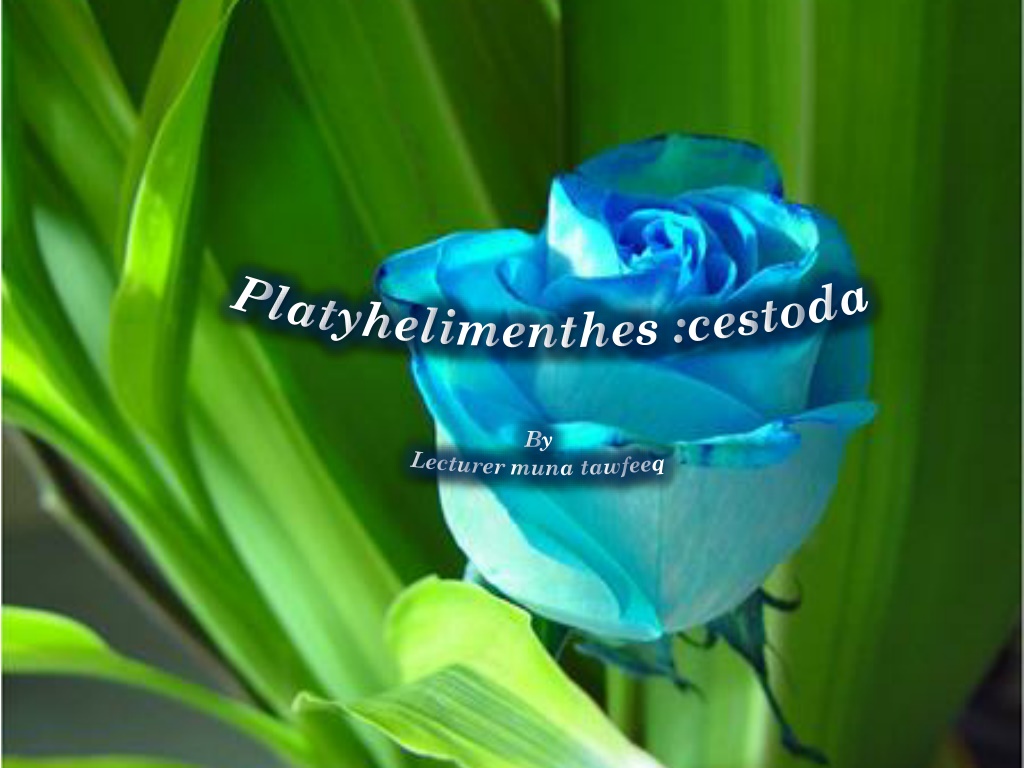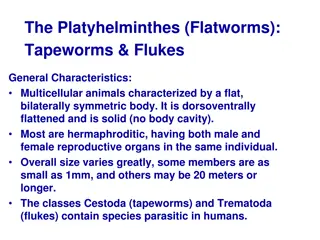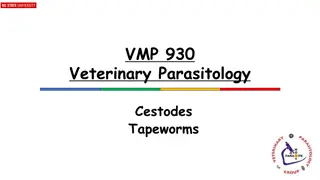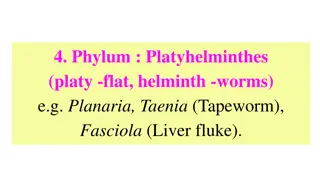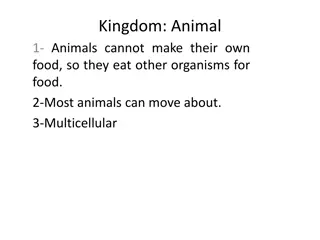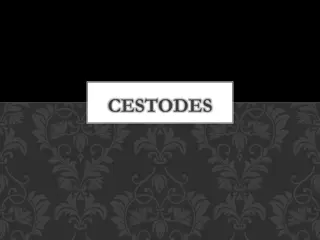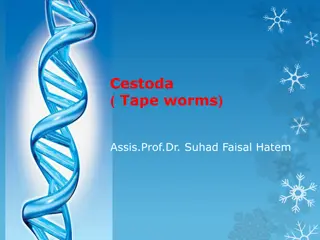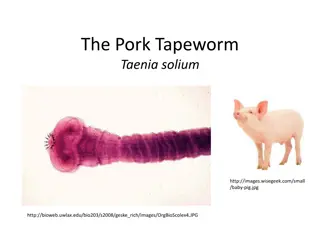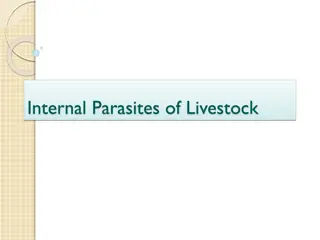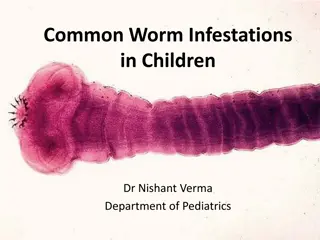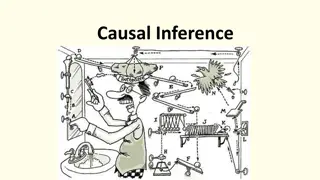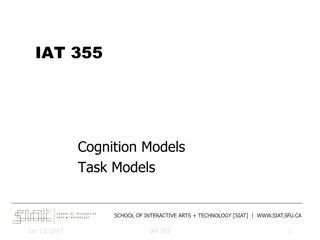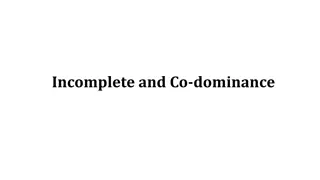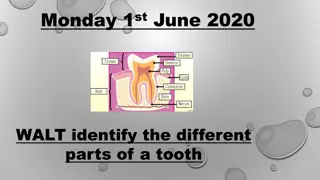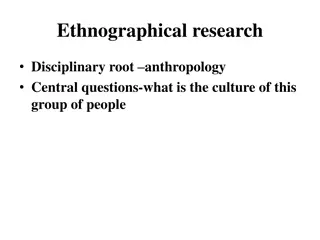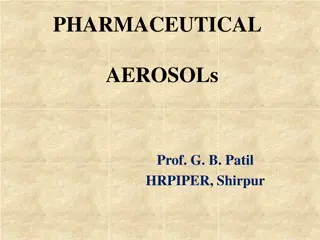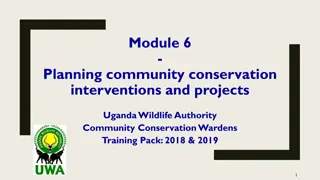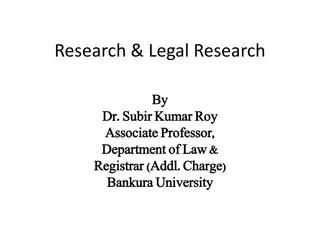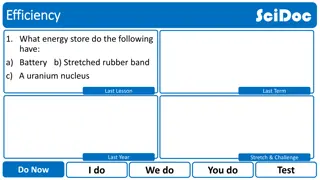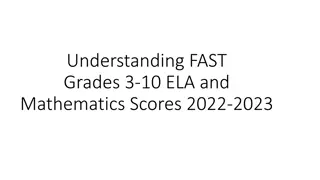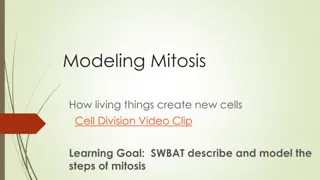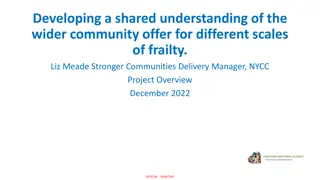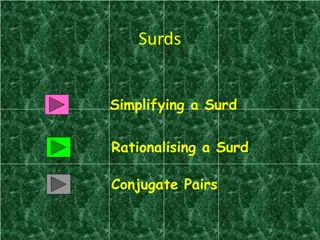Understanding Cestoda: The Tapeworms in Platyhelminthes
Cestoda, a class of parasitic flatworms in the phylum Platyhelminthes, have a unique body structure with a scolex, neck, and segmented strobila. These tapeworms lack a digestive tract, absorbing nutrients through their body. They are hermaphrodites, with male and female reproductive organs in the same worm, and use proglottids for reproduction. Cestoda species like Taenia saginata and Taenia solium have specific hosts in their life cycle, with humans being the final host for some. Understanding their life cycle and anatomy is crucial in preventing infections.
Uploaded on Oct 02, 2024 | 0 Views
Download Presentation

Please find below an Image/Link to download the presentation.
The content on the website is provided AS IS for your information and personal use only. It may not be sold, licensed, or shared on other websites without obtaining consent from the author. Download presentation by click this link. If you encounter any issues during the download, it is possible that the publisher has removed the file from their server.
E N D
Presentation Transcript
Platyhelimenthes :cestoda By Lecturer muna tawfeeq
Classification: Kingdom: Animelia Phylum: Platyhelminthes Class:Cestoidea Order: Cyclophyllidea Family: Taeniiadae Genus: Taenia Species: Taenia solium
Cestoda Body Component: Cestoda(tapeworm)body composed of head (scolex), neck and strobila (segmented). The small scolex, has suckers for hanging to the intestinal wall of the host, but it has no mouth because nutrients are absorbed directly through the bodyof the worm. The head is attached by a neck to the strobila, a long ribbon composed of individual body segments called proglottids, which are generated by the neck.
Reproductive system: Cestoda are hermaphrodite (male and female sex organs are in the same worm).The proglottids are represent male and female reproductive organs. The proglottids arranged from the smaller newly formed ( immature segments) nearest the neck to the larger, ones containing mature reproductive organ (mature segment) and (gravid segment) has matureeggs at the distal end of theworm. The proglottids are either shed in one piece in feces after separation from the strobila or break open in the intestine and push out freeeggs into the feces.
Nutrition : In the Cestoda the digestive tract is absent and all nutrients are absorbed across the tegument (the membrane which covering found in all parasitic Platyhelminthes). The advantage of a flat body is that it increases surface area and allows the worm to exchange gas and lose waste by diffusion.
Cestoda species: Intermediate host Name Final host Taenia saginata cow human Taenia solium pig Huma Diphyllobothrium latum fish human
Life cycle of taenia saginata: When cattle (intermediate host) eat proglottids or eggs from contaminated fields and water, the eggs hatch in the small intestine, and the released larvae migrate throughout the organs of the cow at last, larvae encysted in the muscles, becoming young tapeworms that are the infective stage for humans(final host). When humans ingest a live encysted tapeworm in beef, it is firmly attaches to the intestine by the scolex, where it develops into an adult tapeworm. Humans are not known to acquire infection by ingesting the eggs. For such a large organism, it is remarkable how few symptoms a tapeworm causes. Patients may complain of abdominal pain and nauseaand discoverproglottids in theirstool.
